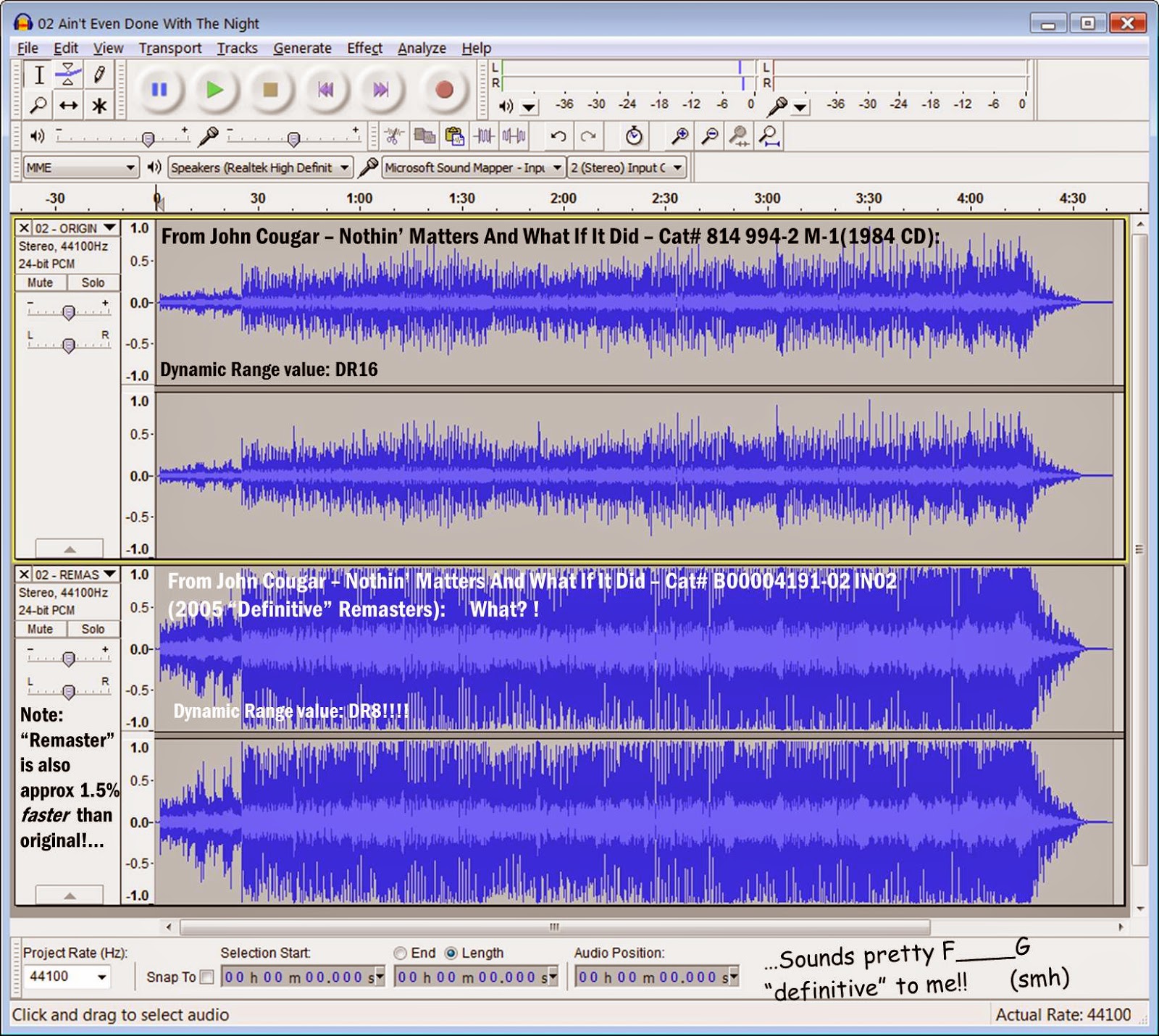-Artists
-Producers/Managers
-The Labels
All three groups of people need to realize that the people
who buy CDs, records, and digital
downloads have the final word on playback volume. Secondly, modern digital media players, on
computers and in our pockets, have software or apps available to automatically
level the volume between, say, a comparatively dynamic 1970s pop or country
classic and, a modern top-40 song which is mastered super loud & compressed
from the get-go. And finally, the
radio: Broadcasting stations, since at
least the 1980s, have possessed processing chains capable of making a soft
clarinet solo sound as loud as the loudest electric guitar in existence. Everything, from the music played, to the
person reading the news or weather, to the sound of commercials, is all
conveniently squashed and boosted up to the same average level. Nothing, not even the most dynamic album ever
produced, not even the DJ pounding the console with a sledge hammer, is getting
through that sucker, LOL, let alone some super loud cluster f*** like the
latest Imagine Dragons album or, lest we forget, Metallica’s 2008 “Death
Magnetic”.
So the very race to release the loudest record ever is
fundamentally POINTLESS, mister big artist, miss producer, mister big label
exec, et al et al…
This does not mean that I am totally against compression or
limiting as a means of enhancing the mixing and mastering stages of
production, but I do draw the line where
those processes are used solely to make something LOUDER.
Certainly, and in the short-term, louder does sound ‘better’
– for physiological reasons I’m not going to hash out in depth on this blog,
but suffice it to say human hearing favors the upper-mid-range(the ‘intelligibility
region’) of our audible band(20Hz-20kHz).
We are especially insensitive to mid- and lower-bass sounds, and
slightly less sensitive to the airy treble range. That is just how we are made.
So if louder is better, where should that loudness come
from? My contention is that it should
come from the last link in the recording – production – mastering – delivery –
playback chain: the amplifier and volume control! So if whatever you are listening on isn’t
loud enough for your tastes, go out and
buy more power! Not easy if your
primary listening platform is a smartphone, mp3 player, or the speakers in a
laptop computer. But if you have a
25watt per speaker stereo at home, go out and upgrade to a 50-100 watt per side
amp or receiver. Even the most dynamic
material won’t tax something that powerful, so you’ll have plenty of reserve
wattage to cleanly and accurately reproduce everything from the pianist turning
the page of their sheet music, to the
actual cannons recorded for Telarc’s edition of the 1812 Overture.
So finally, if you buy a CD or download an album and are
disappointed with the sound, do a little research. It’s all somewhere, on the net! Find out who the artist’s manager or producer is. Find out what label they are on. Start writing letters or e-mails. Make phone calls, but above all, be tactical
and polite with expressing your concerns.






